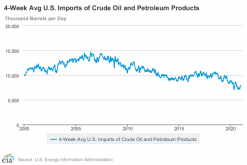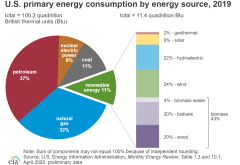Hedges
I See Electromagnetic Fields!
- Joined
- Mar 28, 2020
- Messages
- 21,315
I'm in San Jose, California so pretty mild weather.
I shut heat off at night, turn on by timer a couple hours before I get up.
Summer I usually don't run A/C, but working from home this year it was used more.
Peak grid consumption occurs during afternoon, so PV is a good way to reduce fossil fuel use. So much PV offsetting high priced commercial use, and residential solar pushed by companies selling pollution credits, that we now have the "ducks back" curve with peak remaining demand early evening. A/C use stops at night and for now we have available production then (nuke and hydro)
For now, there are power shortages on hot days. More PV will help. Also needs curtailment of production when excess.
There is talk of grid-scale battery storage. I think load management is higher leverage. Discretionary loads could be controlled to match production. Prior to shutting off the entire grid, ought to send a signal that adjusts thermostats or turns off A/C; that would be better than losing fans and refrigeration. EV charging now at nighttime could be mid-day with chargers at work and shopping locations, controlled by signals according to available power.
Those of us on net metering are not allowed to charge batteries from the grid and "sell" back at peak times, can only charge from PV. Grid/battery storage is done on a different rate schedule.
Winter heating from PV isn't going to work so well. Presently no power shortage, but much heating is done with gas. As new constructions is required to be all electric and no new plants are built, likely to have shortages. Perhaps more wind power would help. Residential thermal storage could shift time of consumption and make it controllable to match production.
Our goal ought to be minimizing use of fossil fuel and being independent of foreign sources, but our policies are driven by profit motive and other agendas.
People who love laws, and people who love sausages, shouldn't watch them being made.
I shut heat off at night, turn on by timer a couple hours before I get up.
Summer I usually don't run A/C, but working from home this year it was used more.
Peak grid consumption occurs during afternoon, so PV is a good way to reduce fossil fuel use. So much PV offsetting high priced commercial use, and residential solar pushed by companies selling pollution credits, that we now have the "ducks back" curve with peak remaining demand early evening. A/C use stops at night and for now we have available production then (nuke and hydro)
For now, there are power shortages on hot days. More PV will help. Also needs curtailment of production when excess.
There is talk of grid-scale battery storage. I think load management is higher leverage. Discretionary loads could be controlled to match production. Prior to shutting off the entire grid, ought to send a signal that adjusts thermostats or turns off A/C; that would be better than losing fans and refrigeration. EV charging now at nighttime could be mid-day with chargers at work and shopping locations, controlled by signals according to available power.
Those of us on net metering are not allowed to charge batteries from the grid and "sell" back at peak times, can only charge from PV. Grid/battery storage is done on a different rate schedule.
Winter heating from PV isn't going to work so well. Presently no power shortage, but much heating is done with gas. As new constructions is required to be all electric and no new plants are built, likely to have shortages. Perhaps more wind power would help. Residential thermal storage could shift time of consumption and make it controllable to match production.
Our goal ought to be minimizing use of fossil fuel and being independent of foreign sources, but our policies are driven by profit motive and other agendas.
People who love laws, and people who love sausages, shouldn't watch them being made.






